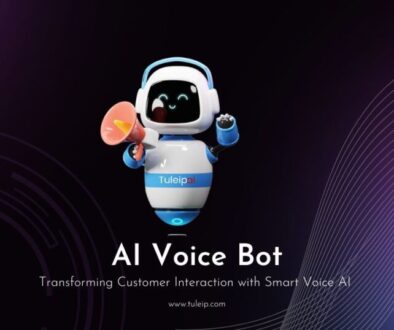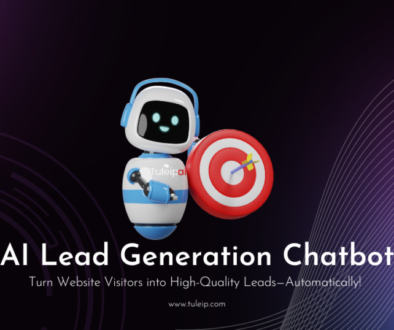AI Knowledge Chatbot: Transforming Information Access and Customer Experience
Introduction
The way we interact with information is changing rapidly. Traditional search methods are evolving into more conversational, AI-driven experiences. An AI Knowledge Chatbot plays a crucial role in this transformation, offering instant, intelligent, and personalized responses to user queries.
In this blog, we will explore:
✔️ What an AI Knowledge Chatbot is
✔️ How it works
✔️ Key benefits for businesses and users
✔️ Steps to develop an effective AI chatbot
✔️ Best practices for optimizing chatbot performance
Let’s dive in!
What is an AI Knowledge Chatbot?
An AI Knowledge Chatbot is an AI-powered virtual assistant designed to retrieve, process, and deliver accurate information from a structured database or knowledge base. Unlike basic chatbots, these advanced bots leverage:
- Natural Language Processing (NLP): Understands and processes user queries in human-like language.
- Machine Learning (ML): Learns from interactions to improve response accuracy.
- Retrieval-Augmented Generation (RAG): Fetches relevant knowledge before generating answers.
- Conversational AI: Engages users with dynamic and context-aware responses.
Types of AI Knowledge Chatbots
📌 Rule-Based Chatbots – Work on predefined logic and decision trees.
📌 Retrieval-Based Chatbots – Fetch responses from a structured database.
📌 Generative AI Chatbots – Generate responses dynamically using AI models like GPT-4.
📌 Hybrid Chatbots – Combine multiple AI techniques for enhanced accuracy and natural responses.
How Does an AI Knowledge Chatbot Work?
A knowledge-based chatbot operates through a four-step process:
1. User Query Processing
The chatbot interprets user input using NLP models, analyzing:
✔️ Intent (e.g., “How does AI work?”)
✔️ Context (e.g., previous interactions)
✔️ Sentiment (e.g., frustration, curiosity)
2. Information Retrieval
It searches a knowledge base (FAQ database, internal documentation, or external sources) using semantic search and vector embeddings.
3. Response Generation
- Static Responses – Predefined answers for common queries.
- AI-Generated Responses – Dynamic responses crafted using LLMs (Large Language Models).
- Hybrid Responses – Factual retrieval + AI-generated explanations.
4. User Interaction & Feedback
The chatbot refines its answers based on user feedback, improving its response accuracy over time.
Why Businesses Need an AI Knowledge Chatbot
💡 73% of consumers expect brands to understand their needs instantly (Source: Salesforce). AI chatbots bridge this gap by providing fast, relevant, and accurate information.
Key Benefits
🔹 24/7 Availability: Always online, providing instant responses.
🔹 Improved Customer Experience: Quick and context-aware replies reduce frustration.
🔹 Reduced Support Costs: Automates 80% of repetitive queries, saving resources.
🔹 Scalability: Handles thousands of queries simultaneously.
🔹 Personalization: Learns user preferences and tailors responses.
🔹 Multilingual Support: Communicates in multiple languages, expanding reach.
✅ Industries Benefiting from AI Knowledge Chatbots:
✔️ E-commerce: Product recommendations, order tracking.
✔️ Healthcare: Patient FAQs, appointment scheduling.
✔️ Finance: Banking queries, investment guidance.
✔️ Education: Learning assistance, AI tutoring.
✔️ HR & Recruitment: Job applications, employee onboarding.
How to Build an Effective AI Knowledge Chatbot
🚀 Step-by-Step Guide:
1. Define the Use Case
🔹 Identify common user queries and pain points.
🔹 Choose a specific domain (e.g., HR bot, customer support bot).
2. Select the Right AI Model
✔️ OpenAI GPT-4 – Best for conversational AI.
✔️ Google Gemini – Advanced search-driven responses.
✔️ Rasa – Custom-built AI chatbots with on-premise control.
✔️ Dialogflow (Google) – NLP-powered chatbot framework.
3. Build a Structured Knowledge Base
📂 Sources: FAQs, help docs, product manuals, CRM data.
🛠️ Tools: Vector databases like Pinecone, Weaviate, or ChromaDB.
4. Implement AI Search & Retrieval Mechanisms
✔️ RAG (Retrieval-Augmented Generation) – Retrieves accurate data before generating responses.
✔️ Vector Search – Enables semantic search for relevant answers.
5. Train and Fine-Tune the Model
🔄 Use real-world conversations to improve chatbot accuracy.
📈 Optimize for intent recognition, entity extraction, and response accuracy.
6. Deploy and Integrate with Platforms
✔️ Website & App Integration – Embed into landing pages and apps.
✔️ WhatsApp, Telegram, Slack – Omnichannel chatbot support.
✔️ CRM & Helpdesk Integration – Sync with Zendesk, Freshdesk, Salesforce.
7. Monitor & Optimize Performance
📊 Track metrics like response time, accuracy, and user satisfaction.
📉 Reduce hallucinations (incorrect AI-generated responses).
🔄 Regular model updates to improve chatbot intelligence.
Best Practices for Optimizing AI Knowledge Chatbots
✅ Use Conversational Design: Keep responses clear, concise, and engaging.
✅ Ensure Multi-Turn Interactions: The bot should remember past messages for continuity.
✅ Incorporate Human Escalation: Offer an option to connect with a live agent when needed.
✅ Optimize for Voice Search & Mobile Users: Many queries come from voice assistants and smartphones.
✅ Adopt AI Governance & Ethical Practices: Avoid bias, misinformation, and data privacy breaches.
Future of AI Knowledge Chatbots
📢 With advancements in autonomous AI agents, multimodal models, and real-time learning, AI chatbots will become more:
🚀 Proactive – Anticipating user needs before they ask.
🧠 Emotionally Intelligent – Detecting sentiment for empathetic responses.
🔄 Self-Improving – Learning from every interaction in real time.
Key Trends:
- AI Agents replacing traditional search engines.
- Voice-activated AI assistants gaining prominence.
- Hyper-personalized AI chatbots for businesses.
Final Thoughts
An AI Knowledge Chatbot is no longer a luxury—it’s a necessity for businesses aiming to enhance customer engagement, streamline operations, and scale support effortlessly.
Whether you’re an enterprise, startup, or individual creator, investing in an AI chatbot will revolutionize how you interact with users, deliver knowledge, and drive growth.
🚀 Ready to build your AI-powered chatbot? Let’s get started!
FAQs
💡 What is the difference between a rule-based chatbot and an AI chatbot?
✔️ A rule-based chatbot follows predefined flows, while an AI chatbot understands queries, learns, and generates responses dynamically.
💡 Can an AI chatbot replace human customer support?
✔️ AI chatbots handle 80% of routine queries, but human intervention is still needed for complex issues.
💡 How do AI chatbots improve over time?
✔️ AI chatbots learn from user interactions, feedback, and data analytics, improving accuracy continuously.
Have more questions? Drop them below! 👇
#AIChatbot #ChatbotDevelopment #ArtificialIntelligence #CustomerSupport #AIForBusiness #ConversationalAI #MachineLearning #NLP #Automation #AIAgent #TechInnovation #SmartChatbot


